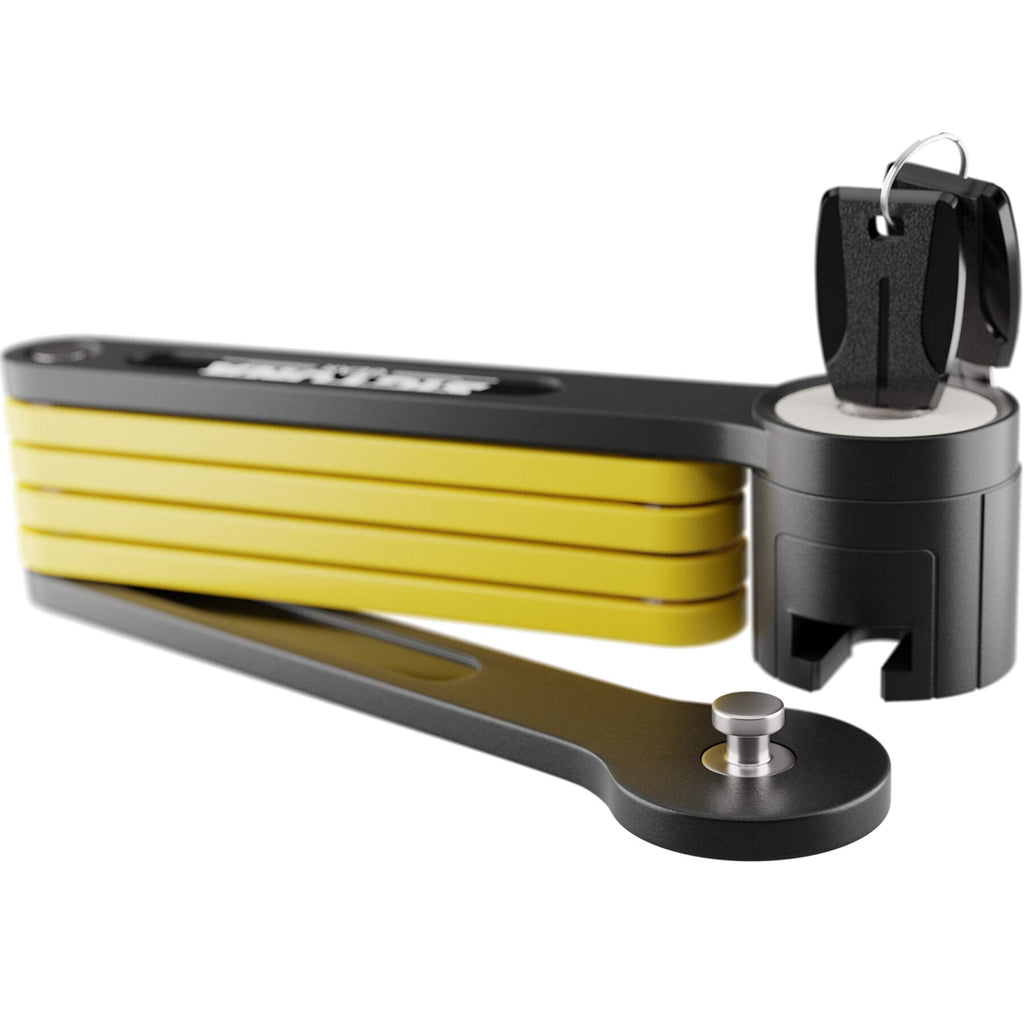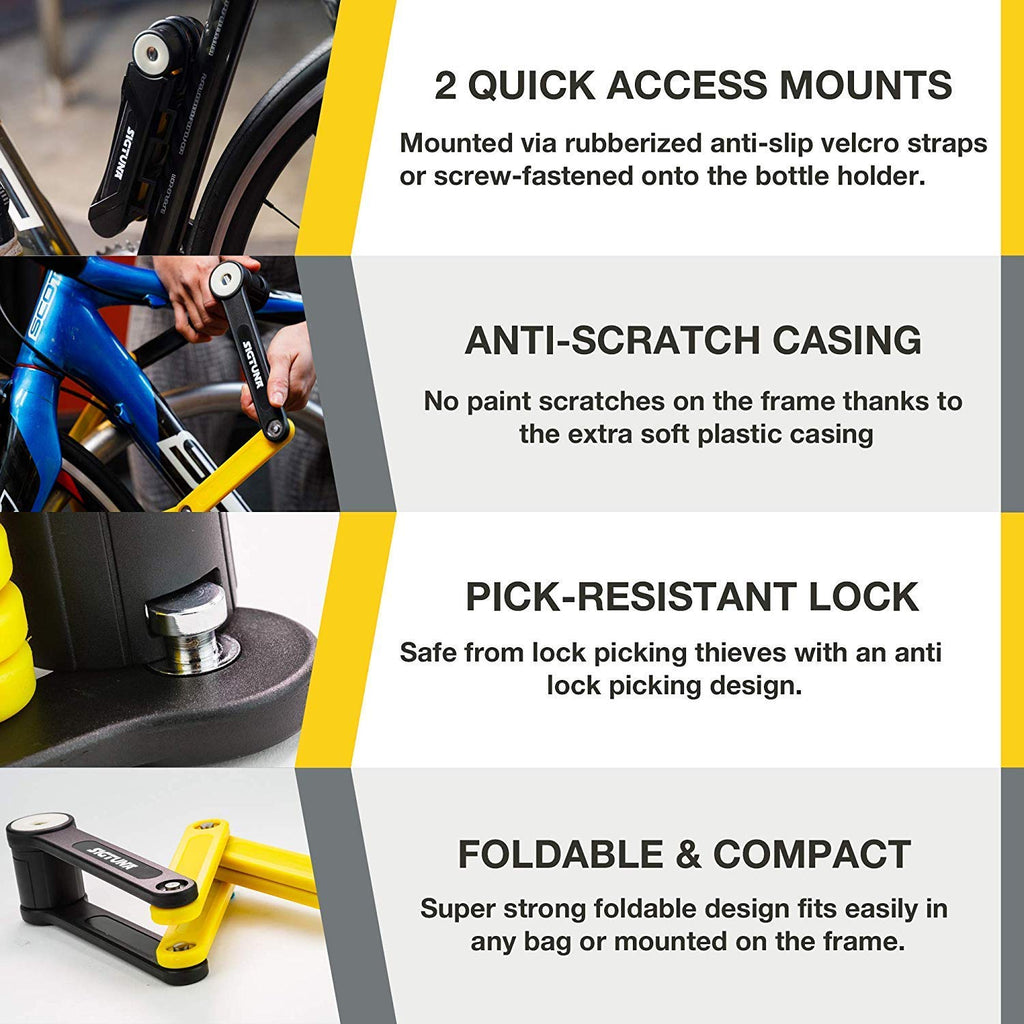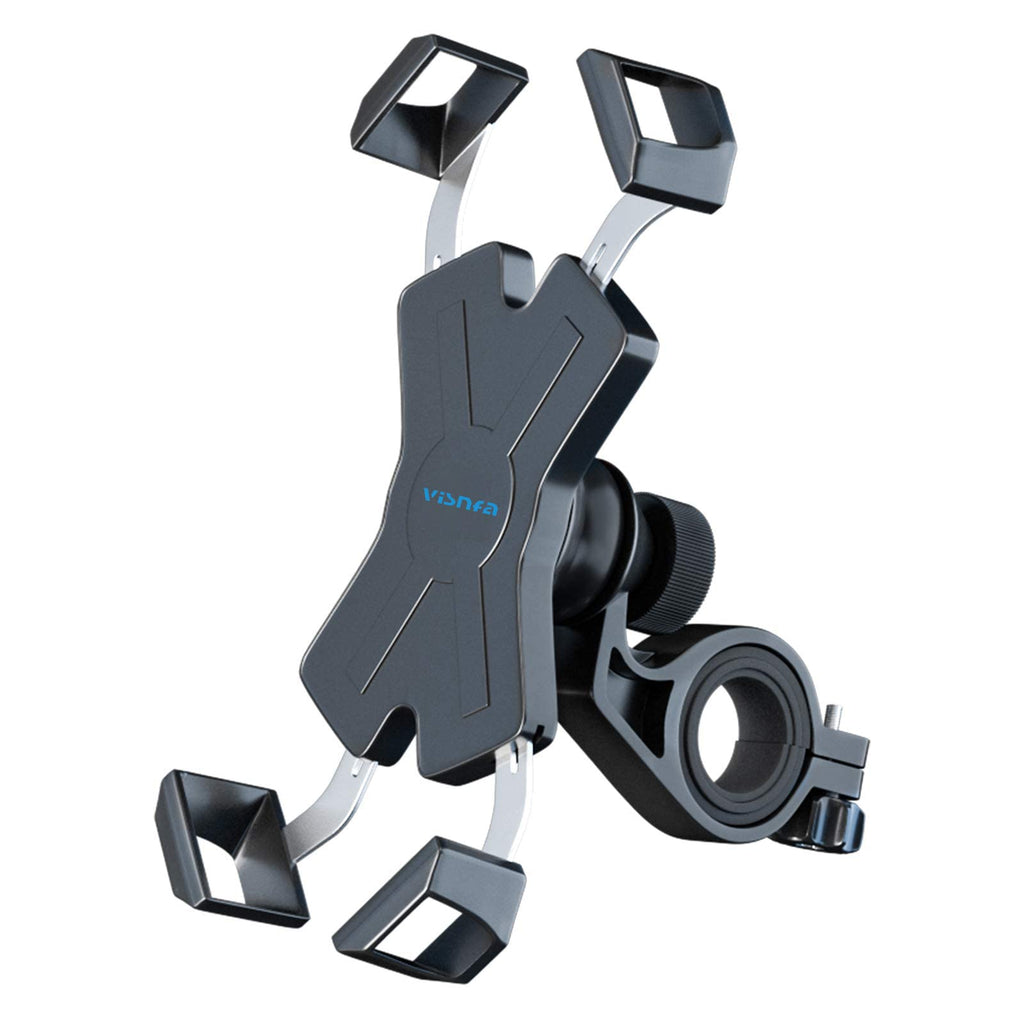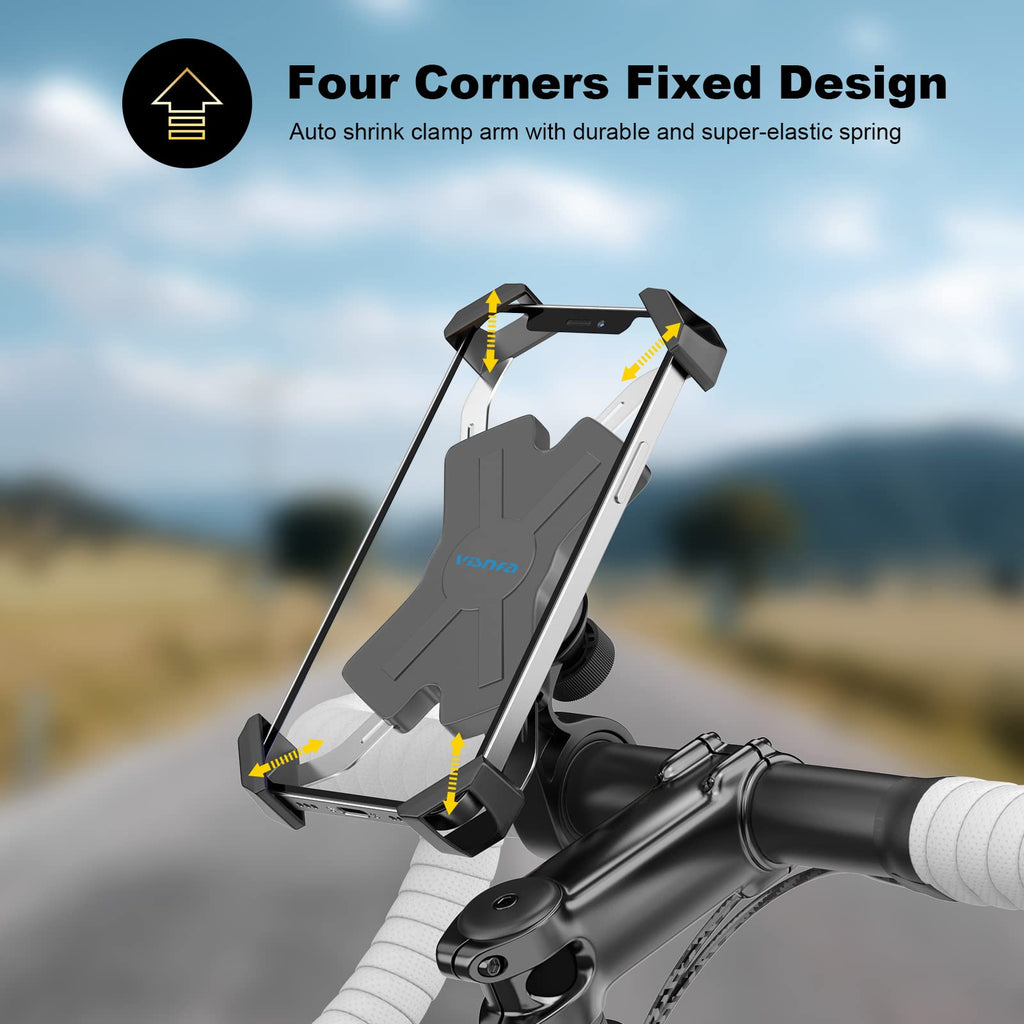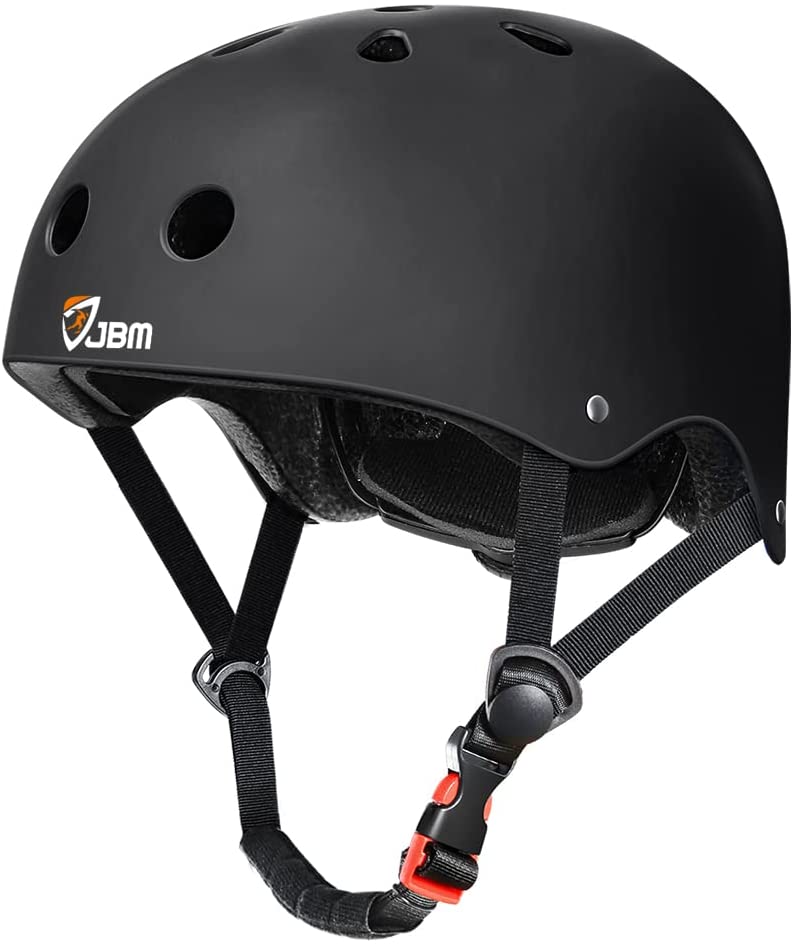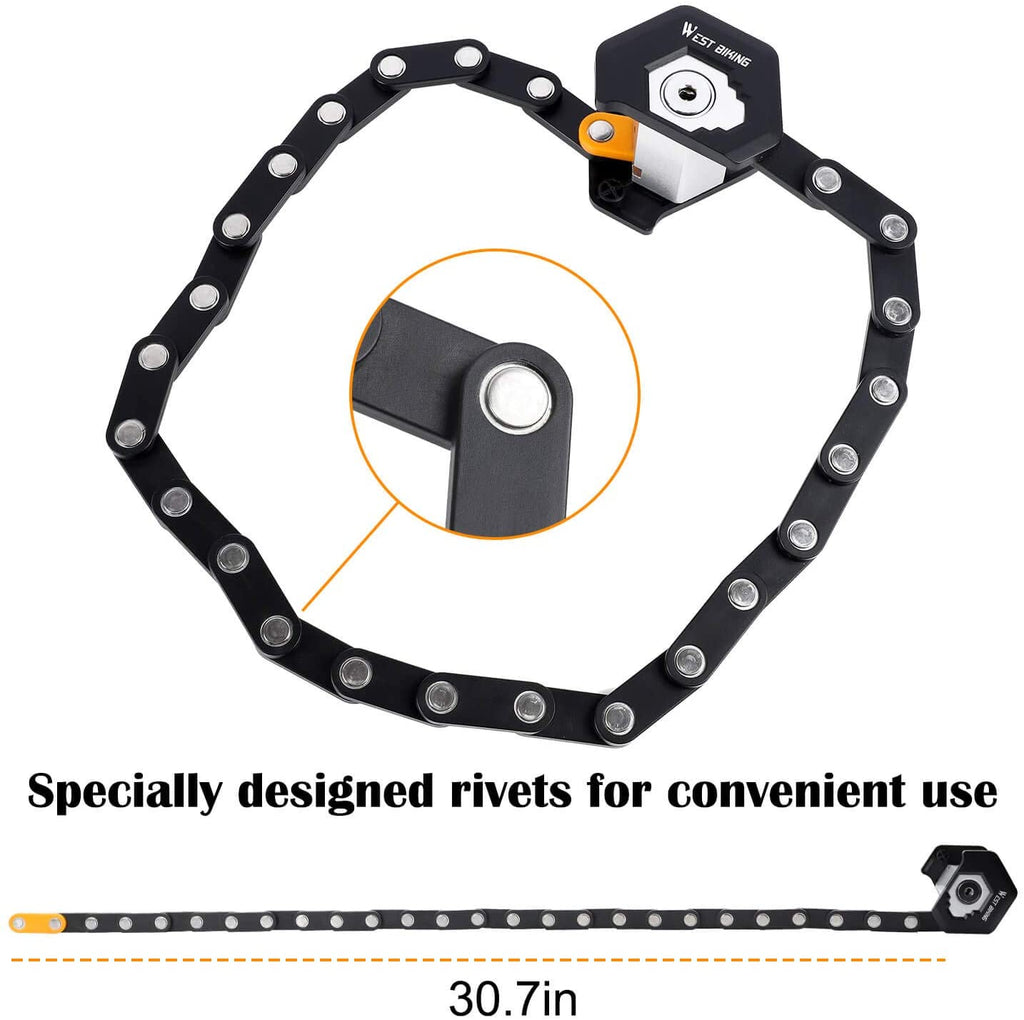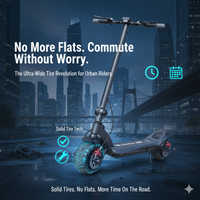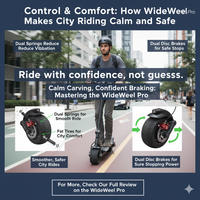Most Popular Ride Picks: Find a Perfect Fit
These are the five scooters we recommend most in the 30–40 mph category. Each balances speed, range, and comfort differently. Discover your favorite model here and grab it.
Best 30-mph Electric Scooters
The Portable Commuter
Discover a 30 mph, Zero 9 Electric Scooter
Best for: Urban riders who want 30 mph speed with compact folding.
Why: Pneumatic tires and suspension smooth out city bumps; fold down for transit carry.
Price range: $800
The All-Rounder
Meet a portable Mantis 10 Lite Electric Scooter
Best for: Riders wanting their first fast scooter in the 30-mph class.
Why: Approachable speed, stable suspension, and a friendlier weight profile than big dual-motors.
Price range: $1,000
Best 40-mph Electric Scooters
Hill-Climbing Powerhouse
Experience a ride with the fast Zero 10X Dual Motor Electric Scooter
Best for: Steeper routes and mixed terrain.
Why: Dual motors + hydraulic brakes deliver confidence up to 40 mph.
Price range: $1,400
Premium Control & Comfort
Meet a Powerful Mantis King GT Electric Scooter
Best for: Those who want premium build quality and high-speed stability.
Why: Refined sine-wave controllers, IPX5 water protection, plush suspension.
Price range: $1,900
Rugged Long-Range Machine
Make a Dual Motor Nanrobot N6 Partner today
Best for: Long, hill-heavy commutes with rougher terrain.
Why: 11″ tires + big torque; real 40 mph class scooter with serious range.
Price range: $1,900
Comparison: 30 mph vs 40 mph Models
| Category | Best 30-Mph Electric Scooter | Best 40-Mph Electric Scooter | |||
|---|---|---|---|---|---|
| Zero 9 | Mantis 10 Lite | Zero 10X | Mantis King GT | Nanrobot N6 | |
| Range (Advertised) | 25 mi | 33 mi | 40 mi | 55 mi | 50 mi |
| Range (Tested) | 20–22 mi | 26–28 mi | 32–35 mi | 45–48 mi | 40–43 mi |
| Speed (Advertised) | 30 mph | 33 mph | 40 mph | 43 mph | 40 mph |
| Speed (Tested) | 29–30 mph | 30–31 mph | 37–39 mph | 41–42 mph | 38–40 mph |
| Weight | 55 lbs | 60 lbs | 77 lbs | 74 lbs | 79 lbs |
| Tires | 10″ pneumatic | 10″ pneumatic | 10″ pneumatic | 10″ tubeless | 11″ pneumatic |
| Suspension | Dual spring | Front + rear spring | Dual arm | Adjustable hydraulic | Robust dual |
| Brakes | Disc + drum | Mechanical discs | Hydraulic | Hydraulic | Hydraulic |
| Who It’s For | Portable commuter | First fast scooter | Hill climber | Premium rider | Rugged long-distance |
| Test Rider Weight | 185 lbs | 200 lbs | 190 lbs | 195 lbs | 200 lbs |
Best 30-mph Electric Scooters for Adults
Stepping into the 30-mph class unlocks stronger torque, steadier handling, and a longer practical range than entry-level commuters. These scooters are built to tackle hills and rough pavement, pairing compliant suspension with confident braking for safer control. If your daily rides stretch further, a 30-mph model is a smart pick, light enough to manage, smooth at speed, and convenient for door-to-door commuting.
1. Zero 9 E-Scooter: The best Dual Brakes Electric Scooter
The safe and comfortable 30-mph city scooter

| Basic Features | Sturdy Design | Measurements |
|---|---|---|
| Motor: 500W base / 1200W peak | Tires: Pneumatic (Front and rear) | Dimensions: 43 x 22 x 46 in |
| Battery: Lithium-ion 48V 13Ah | Suspension: Dual spring | Folded Dim: 43 x 9 x 15 in |
| Range: Advertised 25 mi / Tested 20–24 mi | Brakes: Front disc + rear drum | Weight: 55 lbs |
| Top Speed: Advertised 30 mph / Tested 29–30 mph | Lights: Front + rear LED | Drive: Rear Wheel |
| Weight Limit: 265 lbs / 120 kg | Display: LCD with throttle | Battery Position: Under deck |
The ZERO 9 is purpose-built for daily city commutes. It folds fast, tucks neatly into a trunk or office corner, and still cruises at a confident ~30 mph.
Full pneumatic 10″ tires teamed with dual-spring suspension smooth out cracks and rough patches far better than solid-tire setups, keeping the ride stable and composed.
In testing, it hit 29–30 mph with a realistic 20–22 mile range under a ~190-lb rider. The mixed braking system (front disc + rear drum) delivers predictable, low-maintenance stopping power without driving up cost.
If you want portability with real comfort and speed, the ZERO 9 nails the balance—easy to carry, steady at speed, and practical for everyday rides.
ADVANTAGES
- ✔️ Folds small enough for office storage
- ✔️ Pneumatic tires improve traction vs solid wheels
- ✔️ True 30 mph in testing
- ✔️ Simple, low-maintenance commuter scooter
DISADVANTAGES
- ❌ Limited torque on steep hills
- ❌ Brakes require more hand effort than hydraulics
- ❌ Shorter range at high cruising speeds
Mantis 10 Lite Review: The All-Rounder
Portable and Compact Urban Commuter
| Basic Features | Sturdy Design | Measurements |
|---|---|---|
| Motor: Dual 1000W (Peak 3200W) | Tires: 10 pneumatic (front & rear) | Dimensions (Unfolded): 123 × 32 × 50 cm (≈ 48.4 × 12.6 × 19.7 in) |
| Battery: 52V 18Ah / 21Ah options | Suspension: Front spring + rear hydraulic | Dimensions (Folded): 118 × 33 × 44.5 cm (≈ 46.5 × 13 × 17.5 in) |
| Range: Advertised up to 60 mi (≈ 90 km) / Tested ~40–50 mi (≈ 64–80 km) | Brakes: Hydraulic disc (18Ah = mechanical) | Weight: 32–35 kg (≈ 70–77 lbs) |
| Top Speed: Advertised 40–45 mph (≈ 65–72 km/h) / Tested ~40 mph (≈ 65 km/h) | Lights: Front + rear LED + brake light | Charging Time: ~8–9 hours |
| Weight Limit: 265 lbs (120 kg) | Display: LCD (speed, battery, trip) | Drive: Dual motor, selectable (Eco/Turbo) |
Advantages:
- ✔️ Lighter than 40 mph class models
- ✔️ Smooth suspension for comfort
- ✔️ Great entry into performance class
Disadvantages:
- ❌ Not ideal for steep grades
- ❌ Hydraulic brakes are optional, depending on trim
- ❌ Smaller pack than heavy-duty scooters
Top 40-mph Electric Scooters
Zero 10X Scooter Review: The Hill-Climbing Powerhouse
| Basic Features | Sturdy Design | Measurements |
|---|---|---|
| Motor: 1000W base / 3200W peak | Tires: Pneumatic (Front and rear) | Dimensions: 123 × 32 × 50 cm |
| Battery: Lithium-ion 48V 13Ah | Suspension: Front spring + rear hydraulic | Folded Dim: 118 × 33 × 44.5 cm |
| Range: Advertised 60 mi / Tested 40 mi | Brakes: Hydraulic disc | Weight: 70 lbs |
| Top Speed: Advertised 40–45 mph / Tested 40 mph | Lights: Front + rear LED | Drive: Dual motor, selectable (Eco/Turbo) |
| Weight Limit: 265 lbs / 120 kg | Display: LCD (speed, battery) | Battery Position: Under deck |
The Zero 10X is a torque-first performance scooter built for riders who want real pull and planted control. Twin motors surge off the line and keep pace on 12–15% climbs, turning steep hills into flat ground.
At near-40 mph, hydraulic brakes bite hard yet stay predictable, while the wide deck, long wheelbase, and plush suspension keep the chassis calm over cracks and patches. It’s heavier than commuter models, but that extra mass pays you back with rock-solid stability at speed.
Big pneumatic tires add grip and comfort, the cockpit feels spacious for longer rides, and the folding stem still makes trunk loading doable.
If you want power that feels effortless, and confidence when the road gets fast or rough, the 10X delivers.
Advantages:
- ✔️ True dual motor power
- ✔️ Hydraulic brakes for strong stops
- ✔️ Handles steep hills with ease
Disadvantages:
- ❌ Heavy and less portable
- ❌ Longer charge time
- ❌ More tire/pad wear with fast riding
2. Mantis King GT Review: Premium Control
| Basic Features | Sturdy Design | Measurements |
|---|---|---|
| Motor: Dual 1100W (4200W peak) | Tires: 10 × 3 in pneumatic | Dimensions (Unfolded): 50 × 26 × 24 in |
| Battery: 60V 24Ah (LG cells) | Suspension: Adjustable hydraulic front & rear | Dimensions (Folded): 50 × 26 × 23 in |
| Range: Advertised up to 56 mi / Tested ~36–42 mi | Brakes: Dual hydraulic disc + regen | Weight: 74 lbs |
| Top Speed: Advertised 43 mph / Tested ~40–41 mph | Lights: Front + rear LED + turn signals | Charging Time: ~6–7 hrs (fast charger) |
| Weight Limit: 265 lbs (120 kg) | Display: TFT display with throttle | Drive: Dual motor (Eco/Sport modes) |
Advantages:
- ✔️ Premium build quality
- ✔️ Excellent stability at speed
- ✔️ IPX5 rating for wet conditions
Disadvantages:
- ❌ Higher price point
- ❌ Not a stair-carry machine
- ❌ Fast riding still reduces range
3. Nanrobot N6 Review: The Rugged Long-Ranger
| Basic Features | Sturdy Design | Measurements |
|---|---|---|
| Motor: Dual 1000W (Peak 3200W) | Tires: 10 pneumatic (front & rear) | Dimensions (Unfolded): 123 × 32 × 50 cm (≈ 48.4 × 12.6 × 19.7 in) |
| Battery: 52V 18Ah / 21Ah options | Suspension: Front spring + rear hydraulic | Dimensions (Folded): 118 × 33 × 44.5 cm (≈ 46.5 × 13 × 17.5 in) |
| Range: Advertised up to 60 mi (≈ 90 km) / Tested ~40–50 mi (≈ 64–80 km) | Brakes: Hydraulic disc (18Ah = mechanical) | Weight: 32–35 kg (≈ 70–77 lbs) |
| Top Speed: Advertised 40–45 mph (≈ 65–72 km/h) / Tested ~40 mph (≈ 65 km/h) | Lights: Front + rear LED + brake light | Charging Time: ~8–9 hours |
| Weight Limit: 265 lbs (120 kg) | Display: LCD (speed, battery, trip) | Drive: Dual motor, selectable (Eco/Turbo) |
The Nanrobot N6 is built for endurance-first commuting. Torque-rich dual motors and big pneumatic tires keep momentum on rougher roads and long stretches, so cracked pavement and mild trails feel manageable instead of punishing.
It’s nearly 80 lbs, so this isn’t a toss-in-the-trunk scooter, but that heft brings high-speed stability and a planted, confidence-inspiring ride.
With strong braking and cushy suspension, the N6 settles into a comfortable cruise for extended commutes, making it a realistic car alternative for riders who value range, road feel, and all-weather toughness over ultra-portability.
Advantages:
- ✔️ 11″ tires add stability.
- ✔️ Torque-rich for steep hills.
- ✔️ Larger battery for range confidence.
Disadvantages:
- ❌ Bulky and heavy.
- ❌ Requires more storage space..
- ❌ Higher consumable costs
The speed comparison of 30 and 40 mph
Below is the speed comparison of a 30mph and a 40 mph electric scooter to see which speed limit is better:
What are the travel distance and speed limits?
- Urban speed rule. In the U.S., the speed limit is usually 15 to 20 mph. Most scooters follow this speed limit, and even the most powerful scooters also obey local limits.
- Road types. Private scooters are allowed on lower-speed roads (about 25 to 35 mph limits), which is the speed allowed for private scooters.
- For 8 miles of stop-and-go city riding, a 30 mph class is usually enough. For longer, more open segments (10–20 mi), a 40-mph scooter’s reserve can shorten clock time at the same legal cruise.
Rider Weight, Terrain, and Hills
- Heavier riders & steep grades. Torque demand rises on hills and with higher rider weight. 40-mph scooters are often tuned for stronger sustained output, so they keep speed better on 8–12% grades and under 220–260 lb loads. Typical e-scooter max loads: 220–300 lb.
- Stability at speed. The faster you go, the more stopping distance grows, roughly with the square of speed, and the more chassis stability/brake quality matters.
For Instance
40 vs 30 mph ⇒ stopping distance ≈ 1.78× longer.
Battery Life vs Speed: The Trade-Offs Nobody Tells You
- Here’s the catch with speed: the faster you go, the more the wind fights back. At 40 mph, your scooter is working about two and a half times harder than it does at 30 mph, just to cut through the air. And that extra effort? It eats your battery.
- In real-world terms, a 30-mph scooter cruising at a chill 22–25 mph will usually get you through the day without much drama. A 40-mph scooter, on the other hand, feels amazing when you open it up on a long road, but don’t be surprised if you’re hunting for a charger sooner than you’d like.
- So the rule of thumb? If your rides are short and city-based, go with the steadier 30-mph class. If you’re often on open roads and need that speed margin, the 40-mph models are worth it, just budget for more pit stops at the wall socket.
Safety & Control Considerations
- Braking & reaction. Total stopping distance = reaction + braking distance;
- Braking distance grows roughly with speed². Plan for more room and higher-spec brakes as you move up in speed class.
- Real-world injury context. Studies show most scooter injuries aren’t about the scooter itself; it’s where and how people ride. A helmet and choosing the right lane matter more than top speed
| Rider Profile | Best Choice | Why |
|---|---|---|
| 5–7 mile city commuter, flat terrain | 30 mph Scooter | Lighter, more portable, affordable |
| 8–15-mile suburban or mixed commute | 40 mph Scooter | Extra speed keeps pace with traffic |
| Rider weight 220+ lbs, hilly terrain | 40 mph Scooter | More torque and climbing power |
| Occasional rider, budget-conscious | 30 mph Scooter | Lower cost, easier upkeep |
| Daily long-distance commuter | 40 mph Scooter | Higher range, better stability |
Test Real-World Range & Batteries of 30–40 mph Scooters
When you move into the 30–40 mph class, advertised numbers often look impressive: 30, 35, even 50 miles. Sure, but in real-world use, those figures are rarely achievable. Why? Because manufacturers test under ideal conditions: a light rider (~150 lbs), flat terrain, steady cruising, eco mode, and minimal stops.
Advertised vs Tested Range
In mixed city riding, real-world range for 30–40 mph scooters typically comes in 25–40% lower than advertised.
- A scooter marketed at 40–45 miles may return 24–32 miles when ridden briskly.
- Hard acceleration, stop-and-go riding, hills, headwinds, and using higher speed modes all drain the battery faster.
Rider Weight & Wind Resistance
Two key range killers are rider weight and wind. Sure, heavier loads require more motor torque, and a steady headwind can feel like climbing a hill. Aerodynamic drag rises quickly as speed increases, so sustained 30–35 mph cruising eats more watt-hours per mile than cruising at 20–25 mph.
Rider Weight vs. Realistic Range
| Rider Weight | Realistic Range |
|---|---|
| 180 lbs (82 kg) | 22–28 miles |
| 220 lbs (100 kg) | 18–24 miles |
| 260 lbs (118 kg) | 15–20 miles |
Rule of thumb: expect to lose ~1–2 miles of range for every additional 20–25 lbs of rider + cargo weight. Strong headwinds or lots of hills can subtract even more.
Charging Time & Battery Care
Most 30–40 mph scooters use larger packs often ~1.0–1.5 kWh, e.g., 52–60V with 18–24Ah.
- Standard chargers (2A–3A): ~7–12 hours from low to full.
- Fast chargers (4A–5A, if supported): ~3–6 hours, with more heat, use sparingly and follow the maker’s guidance.
Battery care tips to extend lifespan and preserve range:
Most 30–40 mph scooters use larger packs often ~1.0–1.5 kWh, e.g., 52–60V with 18–24Ah.
- Avoid full drains: Try not to run the pack to 0%; recharge around 20–30%.
- Don’t store at 100%: For overnight or longer storage, park it near 50–80%.
- Use the right charger: Stick with the manufacturer-approved charger to avoid overheating or cell imbalance.
- Let it cool: After hard rides, let the battery cool to room temperature before charging.
Understanding range in real-world terms helps set expectations and avoids range anxiety. If we explain it shortly, the 30–40 mph class gives you speed headroom and hill performance, but budget extra watt-hours or a mid-ride top-up if you plan to ride fast, carry more weight, or tackle wind and hills regularly.
Check the Hill Climb & Torque with 30–40 mph Scooters
One of the most overlooked specs when shopping for a faster scooter is torque, the pulling power that decides how well you climb a 10% grade and how little speed you lose on hills.
Grade, Motor Power & Controllers
A scooter’s hill-climb ability hinges on three things: motor wattage, controller current (amps), and drive setup, single vs dual motor/gearing.
- In BLDC hub motors, torque is directly proportional to current, so higher controller current yields more pull at low speed. That’s why dual-motor scooters and higher-amp controllers typically crest hills faster than single-motor, low-amp setups.
- What real tests show: The standardized hill test uses a 200-ft, 10% grade and reports time/average speed, clearly separating single- and dual-motor performance.
For example, the single-motor did the climb in 13.6 s (~10.0 mph avg) with a 165-lb rider, while the dual-motor did it in ~11 s (~12.4 mph avg) on the same hill.
Torque vs Top Speed
A higher advertised top speed doesn’t automatically mean better climbing.
- On one of the rider’s commutes, about 6 miles with two steep hills, the 30-mph scooter feels perfect. Industry data from controlled hill tests the same 10% grade, same distance. Consistently show dual-motor, higher-amp scooters holding speed better under load than similar-speed singles.
How We (and Others) Test Hills
To make results comparable, reputable outlets run a fixed 10% grade over 200 ft, then record climb time and compute average speed. Research publishes both light (~165 lb) and heavy (~235 lb) rider results on the same hill, so you can see how weight affects performance; heavier riders slow more and benefit from dual motors or higher controller current.
If you weigh more than ~220 lb or encounter frequent 8–12% grades, prioritize scooters with dual motors and robust controllers.
Why 10% Matters
Grade is simply road steepness; 10% means a 10-unit rise for every 100 units forward. It’s a common benchmark for real-world urban hills and gives a reliable, repeatable comparison across scooters.
Ride Comfort: Tires & Suspension in 30–40 mph Scooters
Comfort on a scooter comes down to what you’re rolling on and how the suspension controls those bumps. Tires and suspension together determine whether you glide over rough asphalt or feel every crack.
Pneumatic vs Solid (and Tubeless) Tires
Pneumatic (air-filled)
- Best grip and shock absorption; widely recommended for ride quality even without suspension.
- Perform better than airless/solid tires in the wet (more traction and compliance).
- Trade-offs: puncture risk and basic upkeep
Solid or honeycomb:
- No flats and low maintenance.
- Harsher ride and generally less traction on rough/wet surfaces vs pneumatic.
Tubeless pneumatic (The middle ground)
- Lower rolling resistance and better comfort/traction than tubed, with far fewer pinch flats; can run lower pressures safely.
Suspension Types
None (tire-only comfort): Budget setups rely on tire compliance; the ride is noticeably harsher on cracked pavement.
Spring (coil) suspension: Common on mid-class commuters; simple and effective for small bumps, but can feel bouncy without damping.
Hydraulic / oil-damped shocks (often adjustable): Found on premium 30–40 mph scooters like Zero 10X; superior control over rebound/compression and better stability at speed.
Why It Matters
Do you really need 40 mph for a 5-mile city trip? Probably not. But if you’re hitting long suburban stretches, that extra 10 mph can save serious time.
Braking & Safety (30–40 mph): Which Features Aren’t Optional
Most of the riders say that at 30–40 mph, stopping power and stability matter as much as acceleration. You’re carrying far more kinetic energy than at 20–25 mph, so the hardware and your habits must scale up accordingly.
Brake Types: What to Choose at 30–40 mph
- Hydraulic disc brakes (front + rear): The gold standard for power and consistency. Independent tests on e-scooters show best-in-class systems stopping from 15 mph in under ~10–15 ft, clearly outperforming mechanical setups.
- Mechanical disc/drum: Reliable and serviceable, but typically longer 15-mph stops (often ~20 ft or more) and less modulation than hydraulics. Better than regen alone, but not ideal as your primary system at higher speeds.
- Regenerative braking: Great as a supplement (heat relief, pad life, stability), but not a primary stopper; performance depends on controller tuning and traction.
Minimum spec for this class: Dual hydraulic discs with quality rotors, plus tunable regen for additive drag and balance. Regen alone often needs 30–40 ft from 15 mph, too long.
Reaction distance matters too.
- At 30 mph (~44 ft/s), a 1-second human reaction adds ~44 ft before brakes even bite.
- At 40 mph (~59 ft/s), it’s ~59 ft. Add that to the braking distance for the total stopping distance.
Wet Roads & Tires (Plan for Longer Stops)
Wet pavement reduces friction, lengthening stops by ~15–30% (or more) depending on surface and tread. Worn tires worsen it dramatically; AAA measured ~43% longer wet stopping with worn vs new tires at highway speeds. Keep tread healthy and pressures correct.
Visibility: Lights That Actually Help
It depends on your route, but generally, good brakes don’t help if others can’t see you. Look for bright front LEDs, rear brake lights, and turn signals; add a secondary headlight if you ride at night.
Helmet Standards for Higher Speeds
At 30–40 mph, choose helmets tested for higher-energy impacts
For Instance, NTA-8776 is designed around 45 km/h / 28 mph impacts, with increased coverage or a quality ECE/ASTM downhill/light moto option if your speeds/terrain justify it.
Non-Optional Safety Checklist (30–40 mph)
- Hydraulic discs front & rear + tuned regen: check bite and lever feel before every ride.
- Pneumatic tires with good tread; replace worn rubber and reduce speed in the wet.
- Aim headlights correctly; add auxiliary lighting and reflective gear for night rides.
- Practice the two-finger, both-brakes technique and weight shift for stability. Shorter, straighter stops in tests correlate with balanced front/rear application.
- Mind reaction distance: leave extra margin at 30–40 mph; your brain still needs ~1s to respond.
Are Electric Scooters Legal in the USA?
Yes! Electric scooters are legal in the USA, but laws vary significantly by state and city, with a general trend toward allowing them on bike paths and low-speed roads, while often restricting sidewalk use. Most areas categorize e-scooters as low-speed motorized vehicles with speed limits, and a rider's age, helmet use, and the need for a driver's license can depend on local regulations.
Where You Can Ride
- Bike Paths and Bike Lanes: New York, Seattle, and other states permit riding on bike paths and lanes, treating scooters similarly to bicycles.
- Low-Speed Roads: E-scooters are often allowed on streets with lower speed limits, generally below 30-35 mph, particularly in Florida.
- Sidewalks: In many places, riding on sidewalks is prohibited for safety reasons, though some locations may allow it for short distances.
- Highways and Expressways: E-scooters are typically not allowed on highways, expressways, or other limited-access roads due to their inability to keep up with higher-speed traffic.
Key Legal Considerations
- State and Local Laws: The most crucial step is checking your specific state and local regulations, as they dictate where and how you can ride.
- Speed Limits: Many states enforce a maximum speed for e-scooters, commonly 20 mph, with anything exceeding this limit potentially classifying the scooter as a different vehicle, like a moped.
- Age and Licensing: Some areas require riders to be over a certain age and possess a valid driver's license or learner's permit.
- Helmets: Helmet use may be mandatory, especially for riders under a certain age or in specific areas.
- Registration and Insurance: Generally, a standard e-scooter does not require registration or insurance, though a high-speed scooter might.
Alternatives & Competitors: Which Model to Choose? In 30–40 mph
While 30–40 mph scooters add real hill power and headroom, the right pick depends on how you ride, how far, and what you value most: stability, weight, or features.
Portability vs Performance
- Portability-first: Lighter, simpler chassis that are easier to carry up stairs and stash under desks. Great for short, mostly flat city rides where you rarely cruise above 25–28 mph for long stretches, meet Mantis 10 Lite in this category.
- Performance-first: Heavier frames, bigger batteries, and stronger brakes/suspension that stay composed at 30–40 mph and hold speed on hills. Better for longer routes, rougher pavement, or heavier riders, this is Nanrobot 6.
Mid-Tier All-Rounders
- ~30–33 mph step-up commuters: Scooters like Zero 9 add real-world hill strength, better suspension, and stronger brakes while staying manageable in size and weight, good for riders moving up from 25 mph models.
- High-30s mph with confidence: Models like Zero 10X are known for planted handling, stout braking, and suspension that doesn’t get unsettled over cracks, solid picks for mixed routes and recurring 25–35 mph cruising.
Why This Choice Matters
- Short, flat city hops (under ~8 miles): Portability-first options keep costs and weight down and are easier to store, plenty if you rarely ride above the mid-20s.
- Mixed routes with hills or longer legs (10–20 miles): Step-up all-rounders with stronger brakes and suspension deliver steadier 30–35 mph cruising and better hill holding.
- Frequent high-30s cruising or rough pavement: Premium/refined picks offer the stability, damping, and braking to make faster rides feel smooth and controlled.
Pre-Purchase Scooter Checklist
Are you struggling with choosing the right model? You’re not alone. Let's dive into features before selecting any model.
- Battery: Enough real-world range for your round trip
- Brakes: Mechanical or hydraulic, with regen as a bonus
- Tires: Pneumatic for comfort, solid for zero-maintenance
- Warranty & Service: U.S. support and spare parts availability
- Fit: Handlebar height and deck size suit your stance.
- Weight: Can you lift or roll it when folded?
- Folding: Simple, sturdy latch mechanism
Procedure of Testing: Check Methodology
This isn’t guesswork; each scooter is tested under controlled, repeatable conditions to produce comparable results.
Test Rider & Environment
- Rider mass: 185 lb (84 kg) baseline
- Course: Marked urban loop plus rough-pavement segment
- Surface & weather: Dry pavement when possible; wind < 10 mph noted
- Tire pressure: Set to manufacturer spec before every run
What we measure
1) Top Speed (Advertised vs Tested)
- Method: 3 GPS-verified passes on level ground in highest performance mode.
- Result: We publish the mean of the fastest two and record ambient conditions.
2) Range (Advertised vs Tested)
- Method: Full-to-low battery ride on the same loop at a steady real-world cruise (typically 22–28 mph for 30–40 mph class), mixed stops and lights.
- Result: Total logged miles until power-limited; compare with advertised claim.
3) Hill Climb (10% Grade)
- Method: 200 ft (≈61 m) at 10% grade, throttle-only.
- Result: Time and average speed to the top; note any thermal throttling.
4) Braking Distance (15 mph → 0)
- Method: Three dry-pavement stops from a steady 15 mph.
- Result: Median stopping distance (ft/m) plus notes on lever feel, stability, and ABS/regen behavior.
5) Ride & Stability (Flat + Rough)
- Method: Back-to-back runs over patched asphalt, seams, and small bumps.
- Result: Qualitative scores for comfort, chassis stability, noise, and flex.
6) Lighting & Visibility
- Method: Night checks on an unlit segment.
- Result: Beam reach/spread observations and rear visibility (including brake/turn signals, if equipped).
Tools We Use:
- GPS speed trackers (for verified speed and course mapping)
- Watt meters/app logs (power draw, voltage, current, temp where available)
- Distance logs (odometer vs GPS cross-check)
Data Handling & Reporting
- Averaging: Multiple runs per test; outliers discarded (clear wind gust, wheel slip).
- Comparisons: Tested figures are set side-by-side with advertised specs.
- Context: Results are interpreted with rider weight, hill performance, braking power, and practical factors like portability and ease of use.
Why it matters: A transparent, repeatable procedure helps you translate spec sheets into real-life performance, so you know how a scooter will actually ride on your commute.
Conclusion: Is a 30 mph or 40 mph Scooter the Right Fit for you?
Bottom line? If you’re under 8 miles and have flat terrain, a 30 mph scooter is all you need. Save your money and enjoy the lighter ride. If you ride longer distances, tackle regular hills, or need to keep up with faster traffic, a 40-mph scooter is the better fit, with more torque, steadier cruising at higher speeds, and stronger overall stopping confidence.
Both speed classes are eco-friendly commuting solutions that save money compared to car ownership, but the right pick depends on your terrain, distance, and comfort needs.
Frequently Asked Questions
Is 30 mph fast enough for commuting?
Yes. For city trips under 8 miles, 30 mph scooters are safe and efficient.
How far can I ride at 30 vs 40 mph?
30 mph scooters average 20–28 miles; 40 mph scooters push 35–45 miles in real-world.
Can heavier riders reach the advertised speed/range?
Not always. Over 220 lbs, expect reduced speed and range.
Is 40 mph safe for city streets?
Yes, with hydraulic brakes, proper suspension, and safety gear (helmet, gloves, lights).
What brakes/tires are best for wet roads?
Hydraulic disc brakes paired with pneumatic tires (IP-rated scooters are safer).
